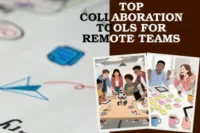Edge Computing Beyond Factories-How It’s Transforming Everyday Spaces
Published: 16 Aug 2025
Edge computing is no longer just for factories and data centers. It’s quietly transforming the way we live, shop, travel, and interact in everyday spaces. From smart buses to interactive museum exhibits, this technology is bringing instant data processing right where it’s needed—closer to people. The result? Faster services, richer experiences, and more secure systems. In this article, we’ll explore how edge computing is making a big impact in non-industrial areas and why it’s becoming essential for modern life.
Why Edge Matters in Non-Industrial Contexts?
Edge computing changes the way data is handled. Instead of sending all information to far-away servers, it processes it close to where it’s created.

In non-industrial areas—like shops, schools, parks, buses, or hospitals—this brings many important benefits.
1. Instant Response
In busy public places, speed matters. Imagine a self-checkout machine in a store that responds instantly, or a bus system that updates arrival times the second a traffic jam happens. With edge computing, there’s no long wait for data to travel to a distant cloud server and back. This quick reaction improves service and keeps people happy.
2. Better Privacy
Some data is personal and sensitive, especially in healthcare, public safety, or education. Edge computing can process this data locally, without sending it to outside servers. This lowers the risk of data leaks and helps keep private information safe.
3. Works Even With Poor Internet
Not all places have strong or stable internet. Outdoor events, rural towns, or moving vehicles often face connection problems. Edge devices can still work and make decisions without needing constant internet access. This keeps services running smoothly, even when the network is weak.
4. Smarter Everyday Services
Edge computing allows devices to think and act on their own. Traffic lights can change based on live road conditions. Public displays can update instantly with emergency alerts. Even vending machines can restock more efficiently because they know in real time what’s missing.
5. Cost Savings
Sending less data to the cloud means less bandwidth use. This can lower internet costs for schools, public offices, or small businesses. It also reduces the need for big data centers to handle every small task.
Real-World Applications Outside Industry
Edge computing is already working quietly in many public and community spaces. It’s not always visible, but its effects can be felt in smoother services, safer environments, and richer experiences. Here are some key examples.
1. Smart Cities & Public Spaces
In modern cities, edge computing helps manage daily life more efficiently:
- Traffic Control: Sensors on roads send live data to nearby edge devices, which adjust traffic lights in real time to reduce jams.
- Surveillance & Safety: Cameras can analyze video on the spot, spotting unusual activity and alerting authorities instantly.
- Public Wi-Fi: Edge computing keeps local networks fast and responsive, even when many people are connected.
- Immersive Kiosks: Tourist information kiosks can offer instant maps, language translation, and event updates without delays.
2. Retail & Experiential Venues
Shops and entertainment places are using edge computing to improve customer experience:
- Frictionless Stores: Systems like “walk-out” shopping detect what customers take and bill them automatically, without checkout lines.
- Personalized Offers: In-store displays can change instantly based on shopper preferences or time of day.
- AR/VR in Museums: Visitors can explore 3D history or art through AR glasses, with the content processed locally for smooth, lag-free viewing.
3. Transportation & Mobility
Edge technology makes travel safer and more efficient:
- Real-Time Route Updates: Buses, trains, and taxis can update routes instantly if there’s traffic or road closures.
- Autonomous Shuttles: Self-driving vehicles can make quick decisions using local edge systems, improving safety for passengers and pedestrians.
- Better Passenger Services: Digital screens in stations can give up-to-the-minute information about arrivals and delays.
4. Healthcare & Public Safety
In health and safety, speed and privacy are critical—edge computing supports both:
- Remote Diagnostics: Doctors can check patient data in real time, even if the patient is far away, thanks to local processing in medical devices.
- Robotics & AI Assistance: Edge-enabled robots can help in surgeries or emergency care, acting quickly without waiting for cloud instructions. Robotics help in everyday tasks.
- Data Privacy: Sensitive health or safety data can be kept and processed locally, reducing the risk of leaks.
Supporting Technologies & Platforms
Edge computing becomes powerful when it works with the right tools and systems. These supporting technologies make it faster, smarter, and easier to manage.
1. Edge-AI Frameworks
Artificial intelligence (AI) at the edge means devices can make decisions without waiting for instructions from far-away servers.
- Advantech’s DeviceOn: This platform helps manage and monitor many edge devices at once. It can update software, check device health, and fix problems remotely.
- MicroCloud: A lightweight cloud system that runs close to the devices. It’s ideal for places with limited internet but still needs modern computing power.
These frameworks allow edge devices to run AI models locally—for example, recognizing faces, reading license plates, or tracking inventory in real time.
2. Autonomous Management Platforms
Managing hundreds or thousands of edge devices manually is impossible. That’s where tools like IBM’s Edge Application Manager come in.
- It can automatically install, run, and update apps on edge devices anywhere in the world.
- It reduces human effort and lowers the chance of mistakes.
- It also helps keep devices secure by pushing updates quickly when threats appear.
With such platforms, organizations can run complex edge networks smoothly, even with small IT teams.
3. Integration with 5G, MEC, and Digital Twins
Some other advanced technologies work closely with edge computing to create even better results:
- 5G Networks: High-speed, low-delay connections make it possible to send and receive data instantly between devices and servers.
- MEC (Multi-access Edge Computing): Brings computing power directly inside the 5G network, reducing delays even more.
- Digital Twins: Virtual models of real-world systems, like buildings or vehicles, that update in real time. When connected to edge devices, they can predict problems, test solutions, and guide real-world changes.
Together, these technologies create a strong foundation for edge computing. They make it faster, more reliable, and ready for large-scale use in public spaces, transport, retail, and healthcare.
Benefits Specific to Non-Industrial Use Cases
Edge computing brings unique advantages when used in public spaces, community services, and other non-industrial settings. These benefits make it valuable for both organizations and the people they serve.
1. Improved User Experience
In many public and service environments, people expect instant results.
- No Waiting: Whether it’s scanning a ticket at a bus station or checking out at a store, edge computing makes actions happen instantly.
- Smooth Interactions: AR exhibits in a museum or live translation kiosks feel natural and responsive because data is processed right on site.
- Better Engagement: Quick response times encourage people to use the service more and trust it.
2. Enhanced Privacy and Security
Non-industrial areas often handle personal or sensitive data.
- Local Processing: Data stays close to where it’s collected, so less is sent to the cloud.
- Lower Risk: Sensitive information—like health details, travel routes, or personal preferences—is less likely to be exposed in cyberattacks.
- Regulation Compliance: In areas with strict privacy laws, keeping data local helps meet legal requirements.
3. Cost Savings
Edge computing can reduce the need for expensive infrastructure.
- Less Bandwidth Use: Because only important data is sent to the cloud, network costs go down.
- Lower Server Needs: Organizations don’t need to rely as heavily on big data centers.
- Efficient Operations: Maintenance can be done remotely, reducing on-site service costs.
4. Resilience and Fast Operations
Public services can’t afford downtime, especially in critical areas like healthcare, transport, or safety.
- Keeps Working Offline: If the internet is slow or goes down, edge devices can still operate.
- Fast Decision-Making: Local processing means quick responses to emergencies or sudden changes.
- Reliability in Remote Areas: Rural towns, moving vehicles, or outdoor events can all benefit from consistent performance.
Unique Challenges in Non-Industrial Areas
While edge computing offers many benefits, using it in non-industrial spaces also brings challenges. Public environments are unpredictable, and technology setups are often less controlled than in factories or data centers.
1. Integration Complexity
Non-industrial areas have many different types of devices and systems working together.
- Different Brands & Systems: A smart bus stop may have sensors from one company, screens from another, and network equipment from a third. Getting them to “talk” to each other smoothly can be difficult.
- Changing Environments: Devices in parks, streets, or moving vehicles face weather, dust, and vibration, which can affect performance.
- No One-Size-Fits-All: Standard designs that work in one location may fail in another because the environment and needs are different.
2. Ecosystem Fragmentation
The edge computing world is growing quickly, but it’s still not fully standardized.
- Different Protocols: Devices from different companies may use their own ways of communicating.
- Compatibility Issues: Without shared standards, connecting new equipment to existing systems can be slow and costly.
- Fast Technology Changes: New versions of hardware and software appear often, making older setups harder to maintain.
3. Security & Maintenance Logistics
Edge devices in public spaces are more exposed than those in secure industrial facilities.
- Physical Risks: Equipment can be damaged, stolen, or tampered with.
- Remote Locations: Devices in rural or hard-to-reach places can be expensive and time-consuming to repair.
- Update Challenges: Keeping all devices updated with the latest security patches is harder when they are spread across many locations.
- Constant Vigilance Needed: Public-facing systems must be monitored closely to prevent both digital and physical threats.
Success Strategies & Best Practices
To get the best results from edge computing in non-industrial areas, organizations need a smart approach.

Here are proven strategies that make adoption easier and more effective.
1. Start with Pilot Projects
Jumping straight into a large rollout can be risky.
- Begin Small: Test edge computing in a controlled location, like one bus stop, one museum hall, or one hospital ward.
- Learn and Improve: Use feedback from staff and users to fix problems early.
- Scale Up Slowly: Once the pilot works well, expand step by step to other locations. This saves money and reduces mistakes.
2. Use Modular, Flexible Platforms
Edge environments can change quickly, so your technology should be adaptable.
- Modular Systems: Platforms like Advantech’s DeviceOn or IBM’s Edge Application Manager let you add or remove features without replacing the whole system.
- Easy Integration: Flexible platforms make it simpler to connect with new devices or services in the future.
- Long-Term Savings: Adaptable systems mean less frequent replacements and lower upgrade costs.
3. Make Security a Priority from Day One
Public and community systems face more risks, so security must be built into every stage.
- Encrypted Edge Nodes: Data should be encrypted while stored and during transfer.
- Regular Updates: Have a clear plan for sending security patches to all devices.
- Access Control: Only authorized people should be able to change system settings.
- Threat Monitoring: Use automated alerts to catch unusual activity quickly.
4. Build Strong Partnerships
No single group can manage an edge network alone.
- Tech Providers: Supply reliable hardware, software, and updates.
- Venue Operators: Understand the daily needs of the location and help with on-site issues.
- Service Integrators: Ensure all parts of the system work smoothly together.
- Collaborative Planning: Regular meetings between all partners help spot problems early and keep projects on track.
Future Outlook
Edge computing in non-industrial areas is still growing, but the next few years will bring even bigger changes. As technology becomes cheaper and easier to use, more public spaces and community services will adopt it.
1. Growth of Edge-Enabled Public and Retail Spaces
We can expect to see edge computing everywhere—from shopping centers to public transport stations.
- Smarter Stores: More shops will use frictionless checkouts, personalized offers, and live inventory tracking.
- Connected Public Areas: Parks, libraries, and tourist spots will have interactive kiosks, free public Wi-Fi, and instant information services.
- Faster Adoption: As devices get smaller and more affordable, even small businesses and local councils will join in.
2. Rising Use of AR/VR, AI, and Smart City Sensors
Advanced technologies will work closely with edge computing to improve daily life.
- AR/VR Experiences: Museums, sports arenas, and events will offer immersive, lag-free experiences powered by local processing.
- AI in Public Services: AI-powered traffic control, waste management, and public safety tools will become more common.
- Smart Sensors Everywhere: Cities will use sensors to track air quality, noise, water usage, and more—all analyzed instantly at the edge.
3. Emergence of Localized, Real-Time Personalized Services
Services will become more personal and relevant to each user.
- Tailored Information: Digital signs in malls or transport hubs will change content based on location, time, and audience.
- Instant Recommendations: Visitors at events could get live suggestions for activities, food stalls, or routes to avoid crowds.
- Community Benefits: Local processing will help keep services relevant to the needs of specific neighborhoods or groups.
Conclusion
Edge computing is stepping out of the factory floor and into the heart of our daily lives. From faster checkouts to smarter traffic lights, it’s quietly shaping how we shop, travel, learn, and stay safe. By keeping data close to where it’s needed, it delivers speed, privacy, and reliability—even in places with weak internet. While challenges like security and integration remain, the benefits are too great to ignore. As more public spaces, businesses, and communities adopt this technology, we can expect a future where everyday experiences are not just connected, but intelligent, responsive, and deeply personal.
FAQs
Edge computing processes data close to where it’s generated, instead of sending it to far-away servers, making responses faster and more reliable.
It enables instant updates, smarter services, and better privacy by keeping data processing local.
Yes—local processing reduces the amount of sensitive information sent over the internet, lowering security risks.
Yes, many edge systems continue operating and making decisions even if the internet is slow or unavailable.
Examples include smart traffic lights, self-checkout systems, AR museum exhibits, and real-time public transport updates.
5G, AI, Multi-access Edge Computing (MEC), and digital twins often work alongside edge computing to improve performance.
Costs vary, but modular and scalable platforms can make adoption more affordable over time.
Key challenges include security risks, integration with existing systems, and maintaining devices in public or remote spaces.
It makes interactions smoother and faster—such as instant ticket scanning, personalized offers, or real-time travel updates.
Expect to see more connected public spaces, AI-driven services, and personalized experiences powered by edge technology.

- Be Respectful
- Stay Relevant
- Stay Positive
- True Feedback
- Encourage Discussion
- Avoid Spamming
- No Fake News
- Don't Copy-Paste
- No Personal Attacks

- Be Respectful
- Stay Relevant
- Stay Positive
- True Feedback
- Encourage Discussion
- Avoid Spamming
- No Fake News
- Don't Copy-Paste
- No Personal Attacks





